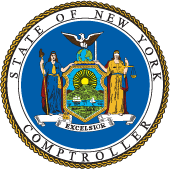Municipal Use of Local Development Corporations and Other Private Entities: Division of Local Government and School Accountability Background, Issues & Recommendations, April 2011
New York’s counties, cities, towns, and villages frequently utilize local development corporations (LDCs) and other private entities for economic development and other activities. These LDCs and similar private entities are exempt from many of the constitutional and statutory provisions that guide the operations and financial transactions conducted by local governments, increasing the risk of waste, fraud, or abuse of taxpayer dollars or assets.
